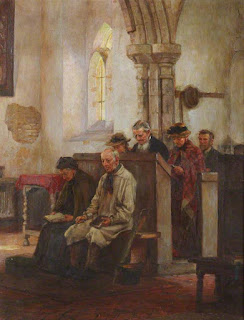"With reverence and godly fear": Old High piety and the absolution at Mattins
How wisely then, how appropriately is the passage before us placed at the commencement of our Liturgy, on the very threshold as it were of God's House of Prayer. This exhortation, followed as it is by the General Confession and by the Absolution, is admirably calculated to place the worshippers in a due frame of mind for the remainder of the service. Repentance gives rise to confession, and confession is followed by absolution, and absolution, if duly received, imparts that quiet consciousness of pardon and peace, which is alone suitable to the heir of covenanted salvation. My beloved brethren, I would entreat you to reflect upon this use of the text, considered as an introduction to our devotions. You think that you should not approach the Holy Communion without due preparation; and you think aright. But surely the same rule applies to the daily ministrations of our Church. You ought to approach the Lord's House as you would His Table, with reverence and godly fear, with a lively faith and a sincere repentance. Come then in future to these holy services, with the humble and contrite heart, which is the wedding garment of the redeemed and sanctified children of God.
(The painting is William Teulon Blandford Fletcher, 'The Sabbath Day', 1916-17.)




Comments
Post a Comment